第44章
The only monkeys I observed at Cameta were the Couxio (Pithecia Satanas)--a large species, clothed with long brownish-black hair--and the tiny Midas argentatus.The Couxio has a thick bushy tail, and the hair of the head, which looks as if it had been carefully combed, sits on it like a wig.It inhabits only the most retired parts of the forest, on the terra firma, and Iobserved nothing of its habits.The little Midas argentatus is one of the rarest of the American monkeys; indeed, I have not heard of its being found anywhere except near Cameta, where Ionce saw three individuals, looking like so many white kittens, running along a branch in a cacao grove; in their motions, they resembled precisely the Midas ursulus already described.I saw afterwards a pet animal of this species, and heard that there were many so kept, and that they were esteemed as great treasures.The one mentioned was full-grown, although it measured only seven inches in length of body.It was covered with long, white, silky hairs, the tail being blackish, and the face nearly naked and flesh-coloured.It was a most timid and sensitive little thing.The woman who owned it carried it constantly in her bosom, and no money would induce her to part with her pet.She called it Mico.It fed from her mouth and allowed her to fondle it freely, but the nervous little creature would not permit strangers to touch it.If any one attempted to do so, it shrank back, the whole body trembling with fear, and its teeth chattered while it uttered its tremulous, frightened tones.The expression of its features was like that of its more robust brother, Midas ursulus; the eyes, which were black, were full of curiosity and mistrust, and were always kept fixed upon the person who attempted to advance towards it.
In the orange groves and other parts, hummingbirds were plentiful, but I did not notice more than three species.I saw one day a little pigmy belonging to the genus Phaethornis in the act of washing itself in a brook; perched on a thin branch, one end of which was under water.It dipped itself, then fluttered its wings and pruned its feathers, and seemed thoroughly to enjoy itself alone in the shady nook which it had chosen--a place overshadowed by broad leaves of ferns and Heliconiae.I thought, as I watched it, that there was no need for poets to invent elves and gnomes while Nature furnishes us with such marvellous little sprites ready at hand.
My return journey to Para afforded many incidents characteristic of Amazonian travelling.I left Cameta on the 16th of July.My luggage was embarked in the morning in the Santa Rosa, a vessel of the kind called cuberta, or covered canoe.The cuberta is very much used on these rivers.It is not decked, but the sides forward are raised and arched over so as to admit of cargo being piled high above the water-line.At the stern is a neat square cabin, also raised, and between the cabin and covered forepart is a narrow piece decked over, on which are placed the cooking arrangements.This is called the tombadilha or quarterdeck, and when the canoe is heavily laden, it goes underwater as the vessel heels over to the wind.There are two masts, rigged with fore and aft sails--the foremast has often besides a main and top sail.
The forepart is planked over at the top, and on this raised deck the crew work the vessel, pulling it along, when there is no wind, by means of the long oars already described.
As I have just said, my luggage was embarked in the morning.Iwas informed that we should start with the ebb-tide in the afternoon; so I thought I should have time to pay my respects to Dr.Angelo and other friends, whose extreme courtesy and goodness had made my residence at Cameta so agreeable.After dinner the guests, according to custom at the house of the Correias, walked into the cool verandah which overlooks the river; and there we saw the Santa Rosa, a mere speck in the offing miles away, tacking down river with a fine breeze.I was now in a fix, for it would be useless attempting to overtake the cuberta, and besides the sea ran too high for any montaria.I was then told that Iought to have been aboard hours before the time fixed for starting, because when a breeze springs up, vessels start before the tide turns; the last hour of the flood not being very strong.